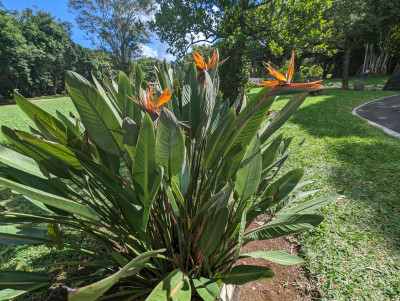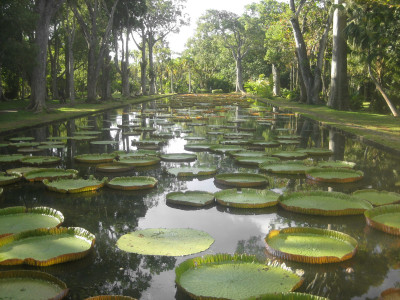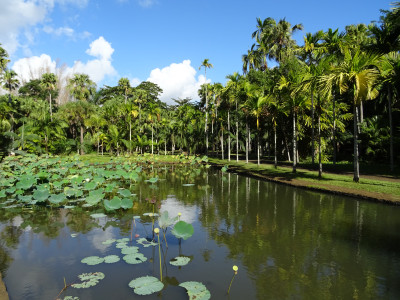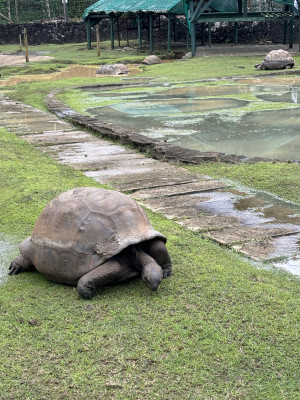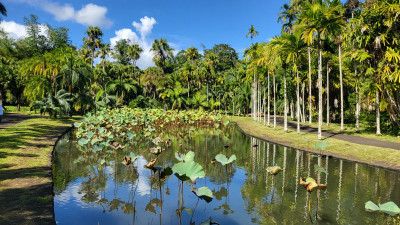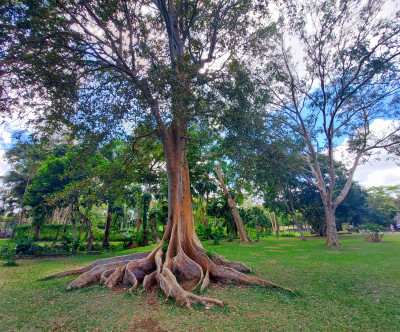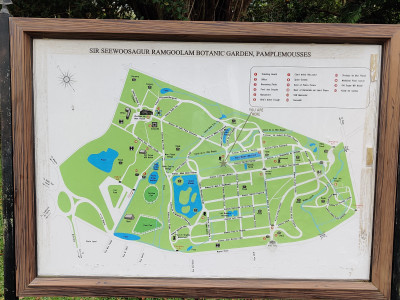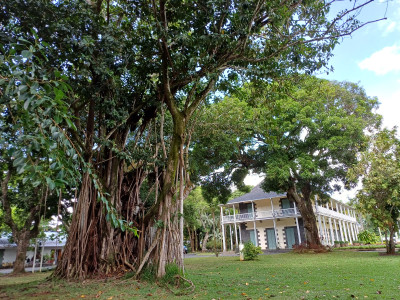SSR Botanic Garden
Updated: September 14, 2024
The Pamplemousses Garden, officially known as Sir Seewoosagur Ramgoolam Botanic Garden (SSR Botanic Garden), is the largest and oldest botanical garden in Mauritius, located in the village of Pamplemousses on the northwest coast of the island, about 11 km from the capital Port Louis. The garden is one of the most popular natural attractions in Mauritius.
Sir Seewoosagur Ramgoolam is one of the most prominent political figures in the history of Mauritius, who played a key role in achieving the island's independence from Britain and is considered the “father of the nation”. He was the first Prime Minister of independent Mauritius and contributed immensely to the development of the country, its political system and social structure.
History of the Botanical Gardens
The history of the Pamplemousse Garden dates back to the 18th century when it was founded in 1735 by the French Governor of Mahé de Labourdonnais as a private garden for the cultivation of exotic plants and spices. It was planted on the site of grapefruit trees (Pamplemousses means Grapefruit in French), the fruit of which was used by sailors as a cure for scurvy.
In 1767, the garden was transformed into a botanical garden under the direction of French botanist Pierre Poivre, who began collecting plants from all over the world.
In 1988, the garden was given its present name in honor of Sir Sivusagur Ramgoolam.
Opening hours and cost of admission
Pamplemousses Botanical Garden is open to the public daily from 8:30 am to 5:30 pm. The entrance fee is about 200 MUR (about 5 euros) for foreign tourists.
The park has a guide (for a fee) and golf cart rentals for up to 3 people.
What to see at Mauritius Botanical Gardens?
- Giant lilies (Victoria Amazonica). One of the main attractions of the garden are the giant lilies known as Victoria Amazonica. These lilies are native to the Amazon and can reach a diameter of up to 2 meters. They grow in the garden's ponds and amaze visitors with their size and unique structure.
- Palm Garden. The botanical garden has a unique collection of palms from different parts of the world and includes more than 85 species of trees. It is worth noting the uniqueness of the Talpot palm (Corypha umbraculfera), which is found in nature in Sri Lanka and South India and blooms once every 60 years before its death.
- Exotic Trees. The garden is also known for its collection of exotic trees, including rare species of baobabs, ebony trees, and the famous blood mari tree (Pterocarpus indicus), whose wood exudes a red resin that looks like blood.
- “Bridge of Sighs” (the name is inspired by the famous bridge in Venice) spans a small body of water with beautiful lotuses and other aquatic plants, including the famous giant Victoria Amazon lilies. The bridge has become a popular spot for couples seeking privacy and tranquility amidst the lush greenery of the garden, and is also a favorite spot for photographers who often use it as the perfect spot for natural landscapes of the garden.
- Replica of an antique sugar mill - demonstrates the construction and working principles of the ancient mills that were used to grind cane and produce sugar juice. This mill is a typical structure with large stone or metal rollers through which the cane, which was ground in the process, was passed.
- The House Museum of the Chateau de Mont Plaisir is a colonial house around which a botanical garden has been built, with guided tours that tell about the life and times of the colonial elite, the history of the garden and the residence itself. Read more about Chateau de Mont Plaisir in a separate article.
- Giant tortoises. The botanical garden contains giant tortoises originating from the Aldabra archipelago (Seychelles). Aldabra tortoises are among the largest in the world. They can reach lengths of up to 1.2 meters and weigh over 200 kilograms. These turtles are considered to be long-lived and can be over 100 years old.
Giant tortoises were once inhabitants of Mauritius itself. Before the Europeans came to the island, various species of turtles lived there, but due to hunting and destruction of their habitat, they were completely exterminated. Nowadays, Aldabra tortoises have been brought to the botanical garden to preserve this species and give visitors the opportunity to see these amazing animals up close.
Pamplemousses Botanical Garden visiting tips
- Best time to visit. It is recommended to visit the garden in the morning when the temperature is more comfortable, especially during the summer months to avoid the heat. There are also fewer tourists in the morning, allowing you to enjoy nature in silence.
- Comfortable clothing. Wear comfortable shoes, as the garden area is quite large, and you will need time to walk along its alleys. It is better to choose sports or walking sandals. Dress in light and loose clothing to protect yourself from the heat. It is also important to bring a hat or cap, as not all areas of the garden are in the shade.
- Visiting with children. The garden is great for visiting with children, as there are plenty of green spaces and places of interest for them.
How to get there
Pamplemousses Garden is located 11 kilometers from the capital Port Louis. It can be easily reached by cab, bus or rented car. Travel time from Port Louis by car is about 20-30 minutes.
Pamplemousses Botanical Gardens reviews:
- The beauty of nature. Many tourists admire the stunning natural beauty of the garden. They note the huge variety of exotic plants, including palm trees and flowers, and the giant Victoria Amazon lilies are one of the main attractions that enthrall visitors.
- Tranquil atmosphere. Tourists love the garden for its tranquility and peacefulness. Walking along the shady alleys among exotic plants allows you to enjoy the silence and relax away from the hustle and bustle.
- Turtles and animals. Giant tortoises are also popular with tourists, especially families with children. Many mention the opportunity to see these majestic animals up close.
- Historical value. Visitors interested in history appreciate the cultural significance of the garden. They note the importance of sites such as the Chateau de Mont Plaisir and the replica sugar mill, which immerse visitors in the colonial history of Mauritius.
